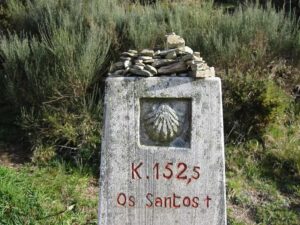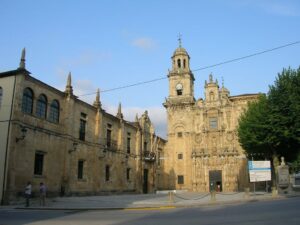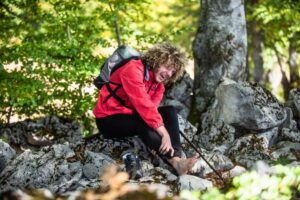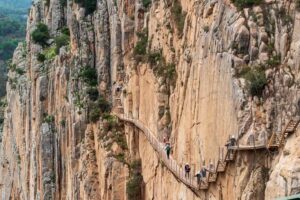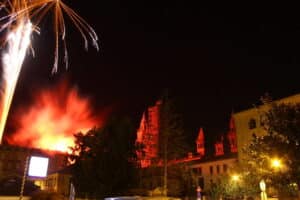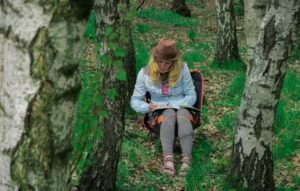
Choosing to do the Camino de Santiago in stages is a smart option for those seeking a more leisurely experience, yet still enriching. It’s not always possible to complete the route in one go, and breaking it into sections allows you to fully enjoy each stage.
By walking the Camino in stages, you can adjust your pace, explore the villages and landscapes in greater detail, and, above all, experience the adventure in a more flexible manner. Additionally, this option provides you with the opportunity to better plan your breaks and organise the trip according to your needs.
Índice de contenidos
Why choose the Camino de Santiago in stages
Opting for the Camino de Santiago in stages is an excellent choice if you have limited time or prefer a more flexible journey. Dividing the route allows you to better organise your stages and enjoy the journey without feeling pressured by the calendar. This way, you can discover the landscapes and villages you pass through at a relaxed pace, stopping at the places that interest you most.
If you dislike excessive planning or prefer a more relaxed approach, working with a travel agency for the Camino de Santiago de Compostela can be a great idea. These agencies offer customised packages tailored to your needs, from booking accommodations to arranging transport for your belongings between stages.
Furthermore, it will be easier for you to pack, adapting it to the length of each stage and deciding whether you prefer to walk longer distances in one section or shorten distances in another.
Main routes of the Camino de Santiago

When planning your Camino de Santiago, it’s essential to know the most notable routes, as each offers a unique experience.
- If you’re looking for a historical and challenging option, the Primitive Way from Asturias is ideal. This is one of the oldest routes, known for its mountainous and tranquil landscapes.
- Another special route is the Way to Muxía and Finisterre, which takes you to what was once considered the “end of the world”. If you’ve already reached Santiago and want to continue, this is an excellent option to extend your adventure.
- If you prefer a shorter route, you can start the Camino de Santiago in Ferrol, and if you’re interested, you can learn more about the history of the English Way to Santiago and keep moving forward. This route has great cultural significance and was historically used by pilgrims from Northern Europe, who arrived by sea at Ferrol and A Coruña.
- Finally, if you decide to start on one of the most popular stages, the Way from O Cebreiro to Santiago de Compostela is another classic. This section combines history, nature, and tradition, offering an unforgettable experience for any pilgrim.
Main sections we recommend

- From Sarria to Santiago de Compostela (5 stages – 111 kilometres). The last 100 km of the French Way, perfect for obtaining the Compostela and enjoying the Galician essence.
- From O Cebreiro to Santiago de Compostela (7 stages – 159 kilometres). The same as the previous one, adding two prior stages.
- From Saint-Jean-Pied-de-Port to Roncesvalles. This is only a 26-kilometre stage that crosses the Pyrenees from France, posing a physical challenge with panoramic rewards.
- From Roncesvalles to Pamplona (2 stages – 42 kilometres)This section of the French Way traverses the beautiful landscapes of the Pyrenees and reaches the historic city of Pamplona, famous for its festivals and medieval architecture.
- From Roncesvalles to Logroño (6 stages – 139 kilometres). This initial section of the French Way combines mountainous landscapes and vineyards, ideal for immersing yourself in Navarrese and Rioja culture.
- From Pamplona to Logroño (4 stages – 95 kilometres). This route passes through hills and vineyards, offering a blend of tradition and gastronomy.
- From Burgos to León (8 stages – 175 kilometres). It crosses the Meseta, notable for its cultural and spiritual heritage.
- From León to Ponferrada (5 stages – 105 kilometres) This section of the French Way combines historical architecture and changing landscapes, from plains to mountains.
- From Astorga to Ponferrada (3 stages – 54 kilometres). Passes through the León Mountains, with stunning landscapes and the famous village of Molinaseca.
- From Ponferrada to O Cebreiro (3 stages – 52 kilometres). Combines valleys and mountains, culminating in the historic village of O Cebreiro, known for its traditional pallozas.
- From Tui to Santiago de Compostela (6 stages – 119 kilometres).The Portuguese Way is characterised by its beautiful landscapes, friendly people, and rich culture.
- From Sarria to Santiago de Compostela (5 stages – 111 kilometres).The most popular option for pilgrims, allowing for a perfect balance between ease and beauty.
Recommendations for planning your Camino
To make your experience unforgettable, here are some practical tips:
- Physical preparation: Start training a few months in advance, focusing on endurance walks and strength training.
- Pack wisely: Carry only the essentials to avoid unnecessary weight. A light backpack makes a significant difference.
- Stay hydrated: Always carry water and snacks to keep your energy up during walks.
- Respect the environment: Follow the marked paths and avoid leaving waste behind.
- Embrace the experience: Enjoy every moment, connect with fellow pilgrims, and take in the incredible scenery.

